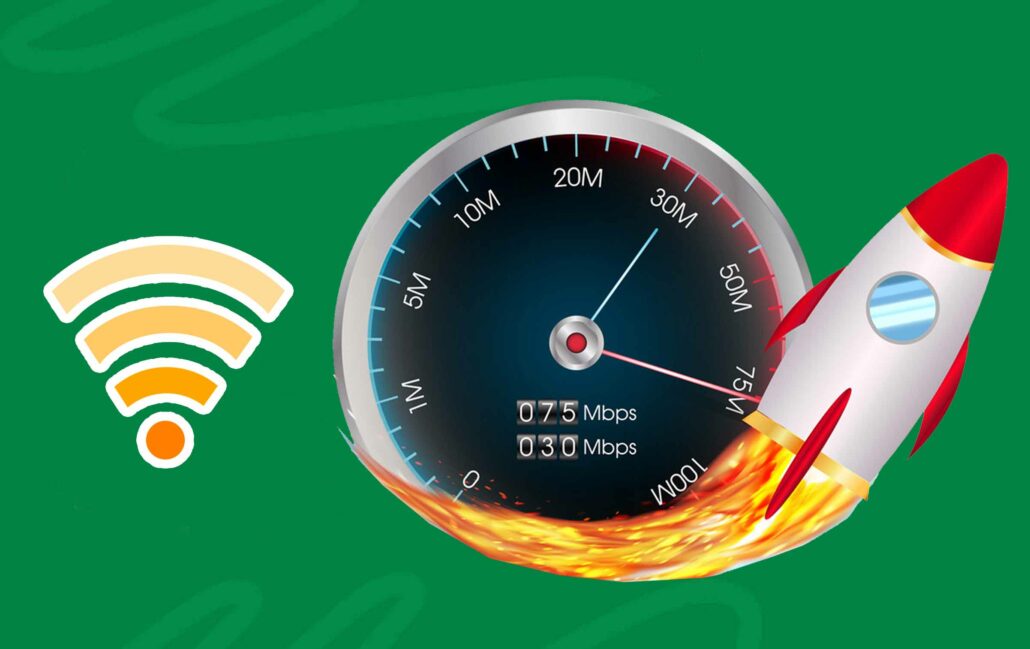If you are experiencing delays with your Wi-Fi when loading websites or streaming content, understanding how to test your internet speed is a good idea. A good internet speed varies on several factors, including your daily online activities, the number of people using the internet, and the nature of your internet usage.

However, the Federal Communications Commission (FCC) has established a minimum standard for broadband internet. This includes 25 Mbps for downloading data and 3 Mbps for uploading data. However, it’s commonly acceptable that a satisfactory download speed should be at least 100 Mbps, while a satisfactory upload speed should be at least 10 Mbps.
How to Test Your Internet Speed
There are numerous methods to test your internet speed, with varying degrees of accuracy, depending on your reasoning for testing. Additionally, there are two popular options free benchmark tools, such as internet speed tests and bandwidth testing apps for smartphones. However, there are additional methods, including service-specific tests, ping and latency assessments, DNS speed evaluations, and others.
Each approach serves various purposes and can provide valuable insights into different aspects of your internet connection’s performance. These tools are user-friendly and provide straightforward results, making them perfect for displaying your new high-speed connection to friends. Here’s how to test a general internet speed test:
- Select a reliable testing site like SpeedOf.Me or Speedtest.net.
- Follow the on-screen instructions provided by the chosen testing site to initiate the internet speed test.
- Once the test concludes, you will receive a test result along with options for sharing, typically through platforms like Facebook or email.
- You can also save these results as image files on your computer for future reference. Additionally, some testing sites automatically store your previous results on their servers.
Testing your internet speed and sharing the results can be particularly exciting after upgrading your connection. Present your 1,245 Mbps download speed on your new fiber connection.
How to Test Slow Internet Speed
You can check your internet speed if you think your fiber, cable, or DSL provider isn’t giving you the speed you’re paying for. Additionally, if your mobile device’s wireless or hotspot connection is slow, you can follow these steps to test your internet speed:
- Find your Internet Service Provider’s (ISP) official internet speed test page.
- Close any other applications, windows, or programs that might be utilizing your internet connection.
- Follow the on-screen instructions provided by the speed test tool to initiate the test.
- Record the results of the speed test or simply take a screenshot.
- Repeat Steps 3 and 4 multiple times, conducting tests using the same computer or device each time and utilizing the same internet speed test tool.
If your internet speed is slower than the bandwidth you are paying for, present this data to your internet service provider (ISP) and request improvements to your connection. Bandwidth that fluctuates throughout the day may indicate issues such as bandwidth throttling or capacity limitations imposed by your ISP.
What to Do If Your Wi-Fi Is Slow
Try this quick fix for lagging internet speeds. Initially, off your Wi-Fi modem for 30 seconds, then on it again. If you are still experiencing difficulties, consider exploring ways to increase your internet speed. Additionally, it’s worth checking your internet provider’s website to see if they have acknowledged any outages.
If an issue has been noted by your provider, there’s no need for you to troubleshoot further on your end. Lastly, consider contacting your internet provider to inquire about whether your Wi-Fi modem is compatible with the speed of your current internet plan. Also, inquire about any promotions or upgrades available that could potentially offer faster internet speeds.
How Much Internet Speed Do I Need
To ensure smooth streaming, gaming, downloading, and online conferencing, a minimum internet speed of 25 Mbps for downloads and 3 Mbps for uploads is recommended. However, if you reside with three or more individuals, internet speeds of at least 100 Mbps for downloads and 10 Mbps for uploads are advisable. These higher speeds accommodate multiple users and bandwidth-intensive activities more effectively.
What is the Fastest Type of Internet
Fiber internet stands out as the fastest type of internet connection available. It utilizes cables designed of bundled fiber-optic strands to transmit significant volumes of data through light signals. The majority of fiber internet plans offer speeds of 1,000 Mbps, although certain providers can deliver speeds of up to 2,000 Mbps or even 5,000 Mbps. Moreover, one advantage of fiber internet is its provision of symmetrical upload speeds, meaning that uploads occur at the same rapid pace as downloads.
Major Benefits Of How To Test Internet Speed
Regularly testing your internet speed is crucial to ensure you receive the service you’re paying for and your connection can accommodate your online activities. By learning how to test your internet speed, you can pinpoint possible issues and take measures to enhance your connection. Whether it’s for streaming, gaming, or everyday browsing, relying on a dependable internet speed test enables you to sustain an effective online experience.
